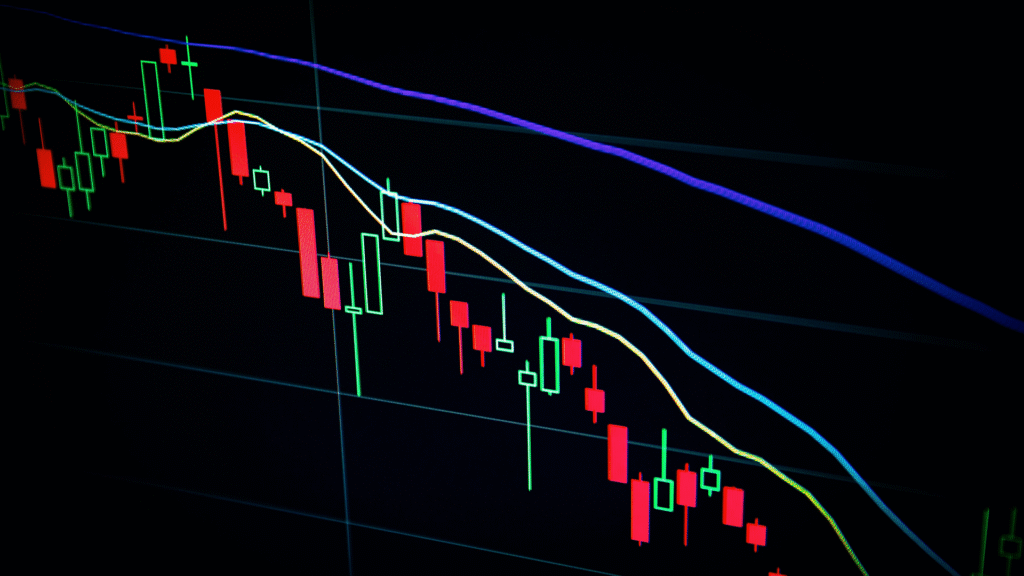Market indices are vital tools for investors. They offer a quick snapshot of market performance. They also reflect economic trends. These indices aggregate the performance of selected stocks or securities. They serve as crucial benchmarks for comparison. Among the most recognized in the U.S. are the S&P 100, Dow Jones Industrial Average (DJIA), and Nasdaq Composite. Each serves a unique purpose. They cater to different investor needs. This blog will break down these indices. We will help you understand their structure, significance, and differences.
Key Takeaways
- Market indices track the performance of selected securities, offering quick snapshots of market trends and economic health.
- Major U.S. indices like the S&P 100, DJIA, and Nasdaq Composite each provide unique views on different market segments.
- Indices serve as crucial benchmarks for portfolio performance and form the basis for financial products like index funds.
- Understanding these benchmarks helps investors diversify holdings and make informed decisions about asset allocation.
What Are Market Indices?
Market indices are statistical measures. They track the performance of a group of stocks or securities. They simplify complex market data into a single value. This value represents broader market trends. The primary purpose of these indices is clear. They provide benchmarks for investment performance. Investors use them to assess market sentiment. They also gauge economic conditions.
You can categorize indices in various ways. Broad Market Indices represent the overall stock market. The S&P 500 is a prime example. Sector-Specific Indices focus on particular industries. Nasdaq Biotechnology Index tracks healthcare technology, for instance. Regional/Global Indices track markets across continents or worldwide. The MSCI World Index is a global benchmark. Understanding these distinctions helps you navigate financial markets.

The S&P 100: Blue-Chip Performance
The S&P 100 is a specialized subset of the S&P 500. It measures the performance of 100 large-cap blue-chip companies. These are generally well-established companies. They have stable earnings and strong reputations. This index includes companies like Apple, Microsoft, and Amazon. Its components are typically leaders in their industries.
Market capitalization primarily determines the index’s weighting. Larger companies have a greater impact on its movements. Investors often use the S&P 100 to gauge the health of major U.S. corporations. They also use it for large-cap equity performance. Therefore, it provides a focused view of the biggest players.
Dow Jones Industrial Average (DJIA): An Industry Bellwether
The Dow Jones Industrial Average is perhaps the oldest and most famous index. It tracks 30 prominent U.S. companies. These companies come from diverse sectors. They are generally considered industry leaders. Names like Boeing, Coca-Cola, and Disney often appear on this list.
Unlike other indices, the DJIA is price-weighted. This means stocks with higher prices have a greater influence. A small percentage change in a high-priced stock affects the index more. While popular, some critics argue its small number of components makes it less representative. Nevertheless, many investors still view it as a key indicator. It signals the overall health of industrial America.
Nasdaq Composite: A Tech-Driven Benchmark
The Nasdaq Composite differs significantly. It includes almost all stocks listed on the Nasdaq stock exchange. This encompasses over 3,000 companies. Many are technology and growth-oriented firms. Iconic companies like Apple, Microsoft, Amazon, and Tesla list on Nasdaq.
The Nasdaq Composite is market-capitalization weighted. This means larger companies heavily influence its movements. Its tech-heavy composition makes it volatile. However, it also offers significant growth potential. Investors often look to the Nasdaq Composite. They want to gauge the performance of the technology sector. It reflects the broader growth trends in innovative industries.
Key Differences Between Major Indices
Understanding the distinctions among these indices is crucial. It helps investors tailor their strategies.
| Feature | S&P 100 | Dow Jones Industrial Average | Nasdaq Composite |
| Number of Companies | 100 large-cap U.S. companies | 30 top U.S. companies | All Nasdaq-listed stocks (~3,000+) |
| Weighting Method | Market-cap weighted | Price-weighted | Market-cap weighted |
| Industry Focus | Diverse sectors | Diverse sectors | Tech-heavy |
| Volatility | Moderate | Low | High |
These differences allow investors to choose benchmarks. They align them with their risk tolerance and investment goals.
Why Are These Indices Important?
Market indices play several critical roles in investing.
Performance Benchmarks: They provide clear benchmarks. Investors use them to measure their own portfolio performance. This helps assess success.
Economic Health Indicators: They reflect economic health. They also show investor sentiment across various sectors. Analysts track them closely.
Foundation for Financial Products: Many financial products track these indices. Index funds and exchange-traded funds (ETFs) are prime examples. These products allow easy diversification.
Diversification Tool: Tracking different indices helps investors diversify holdings. They can spread risk across various industries and levels.
Understanding these roles helps investors make informed decisions. This includes asset allocation and risk management strategies.
Conclusion
Grasping how key market indices operate is essential. Indices like the S&P 100, Dow Jones Industrial Average, and Nasdaq Composite are fundamental. Each offers unique insights into the U.S. stock market. From blue-chip stability to tech-driven growth, they guide investors. By leveraging this knowledge, you position yourself for success. Informed decisions are key to your investment journey.


